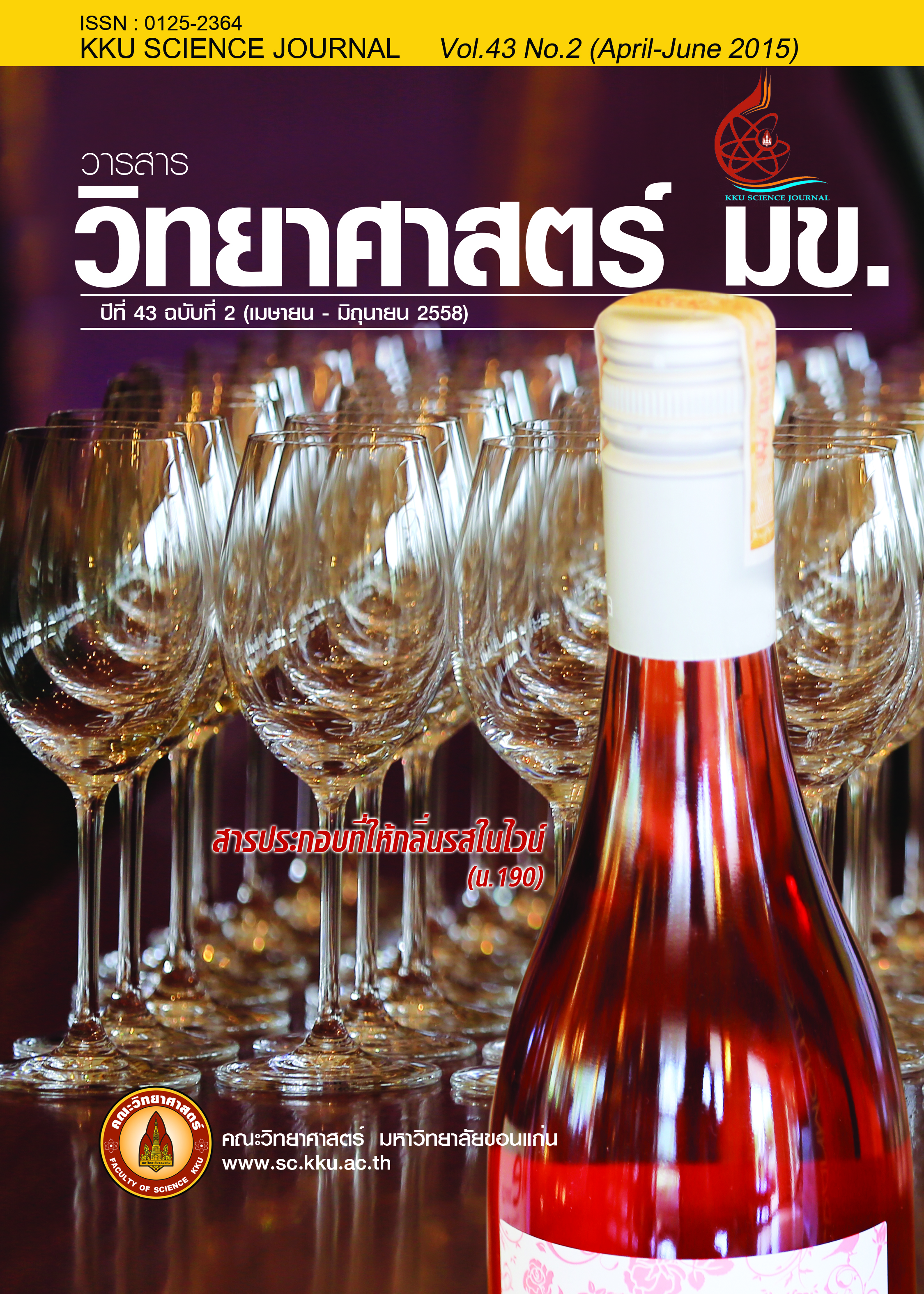The Evaluation of Phytochemical Content, Antioxidant Activity and Total Phenolic Content of the Native Mango in Chachoengsao Province
Main Article Content
Abstract
Mango is a traditional herb having medical effects. It has been used widely in alternative medicine and sold as economic crop for fresh consumption in both inbound and outbound. The aim of this research was to study chemical composition, antioxidant activity, beta-carotene, lycopene contents, total phenolic contents, of Thai native cultivar mangos in Chachoengsao province such as Nam dok mai, Kaiteuk and Mahachanok. The contents of total phenolic compound and Beta-carotene, and lycopene were determined by HPLC. The antioxidant activities were also determined using DPPH and FRAP methods. The results showed that total phenolic content of Thai native cultivars of mango was 2.78-4.12 mg gallic acid/100 g FW, and was slightly different among cultivars. The “Nam dok mai” has the highest total phenolic content, least in second level from “Mahachanok” for DPPH activity, and FRAP activity. The beta-carotene content was found to be 2.29-3.79 mg/100g in green mangos, and 20.54-50.32 mg/100g in ripe mangos. The “Mahachanok” cultivar was found to have the highest betacarotene content whereas the “Kaiteuk” cultivar was found to have the least beta-carotene content. Lycopene content was enough to be detected in three cultivar mangos about 0.22–0.28 mg/100 g FW. The “Nam dok mai” cultivar of mango gave the highest lycopene content about 0.28 0.28 mg/100 g FW, next “Kai teuk” and “Mahachanok” cultivar about 0.25 and 0.22 mg/100 g FW. The flavonoid content was 0.27-185.25 mg/100 mg in three cultivars. The ripe mango was found around 0.12-978.12 mg/100g The “Nam dok mai” cultivar of mango gave the highest flavonoid content about 978.12 mg/100 g FW
Article Details

This work is licensed under a Creative Commons Attribution-NonCommercial-NoDerivatives 4.0 International License.


